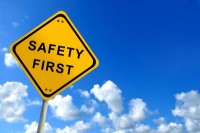
Human factors influencing safety in the workplace
Beyond Rewards Inc
Safety is expensive, but an accident is even more costly. All organizations, all business owners, all managers, supervisors and workers in all workplaces need to understand the effect of work performed on the human body and how we influence the demands of the work we do through human interaction. Both of these things relate to the correlation between the worker and the demands of the work they do, known as ergonomics and human factors.
Human factors refer to environmental, human and individual characteristics, organizational and job factors which influence the behaviour at work in a way which can affect health and safety. Three interrelated aspects must be considered in assessing human factors in correlation to safety incidents: the job, the individual and the organization.
The job assessment looks at the nature of the tasks, the workload, the working environment, the design, display and controls, and the role procedures play on the job. The individual assessment looks at the workers competencies, skills, personality, attitude, and risk perception. Identify what individual characteristics can be changed and what are fixed. Additionally, the organizations work patterns, culture, resources, communications, and leadership, policies, and programs are some of the organizational influences on behaviour and need to be looked at in the review of the job design.
In summary, human factors identify what people are being asked to do (the task and characteristics), who is doing it (the individual and their competencies) and where they are working (the organization and its attributes). A good safety management system includes human factor assessments in a similar way to any other risk management program, categorizing human failure with the different causes and influencing factors as well as prevention strategies to reduce the failures.
There are three types of human failure (unsafe acts) that often lead to major workplace accidents:
- Errors (slips/lapses) or unintentional actions like forgetting to complete a certain step in a transaction or process.
- Mistakes (also errors) but of judgment or decision-making where we do the wrong thing but believe it to be right.
- Violations or intentional errors such as taking shortcuts or non-compliance with procedures.
Managing human failure is essential to preventing occupational accidents both minor and major as well as ill health and maintaining the reputation and potential loss of revenues for the organization.
Major incidents frequently involve human error of operators or maintenance personnel with the underlying reasons for the accident stemming from the responsibility of those more senior in the organization’s inadequacies in competency assurance systems, poorly designed equipment, or lack of resources or training that influence the behaviours of everyone in the organization, leading to human error. We cannot just address safety through a foggy lens that behavioral safety programs are an alternative to ensuring that adequate engineering and safety management system are in place in the workplace; they need to work hand in hand together and be adequately managed, but not until technical and systems issues have been addressed and it can be assumed that accidents are due to cultural and behavioral factors.
Although great strides and advances have been made in safety over the past decade, major accidents are still occurring due to failures in safety program design, implementation and management.
The success of an organization is achieved through high productivity and quality while ensuring the health and safety of its workers combined with best work practices and systems to achieve these goals. The best work systems include skilled workforces, well-designed jobs that are aligned with individual abilities improving health and safety and ensuring a better managed and more effective organization.
Table of Contents
Compliance Made Easy®

